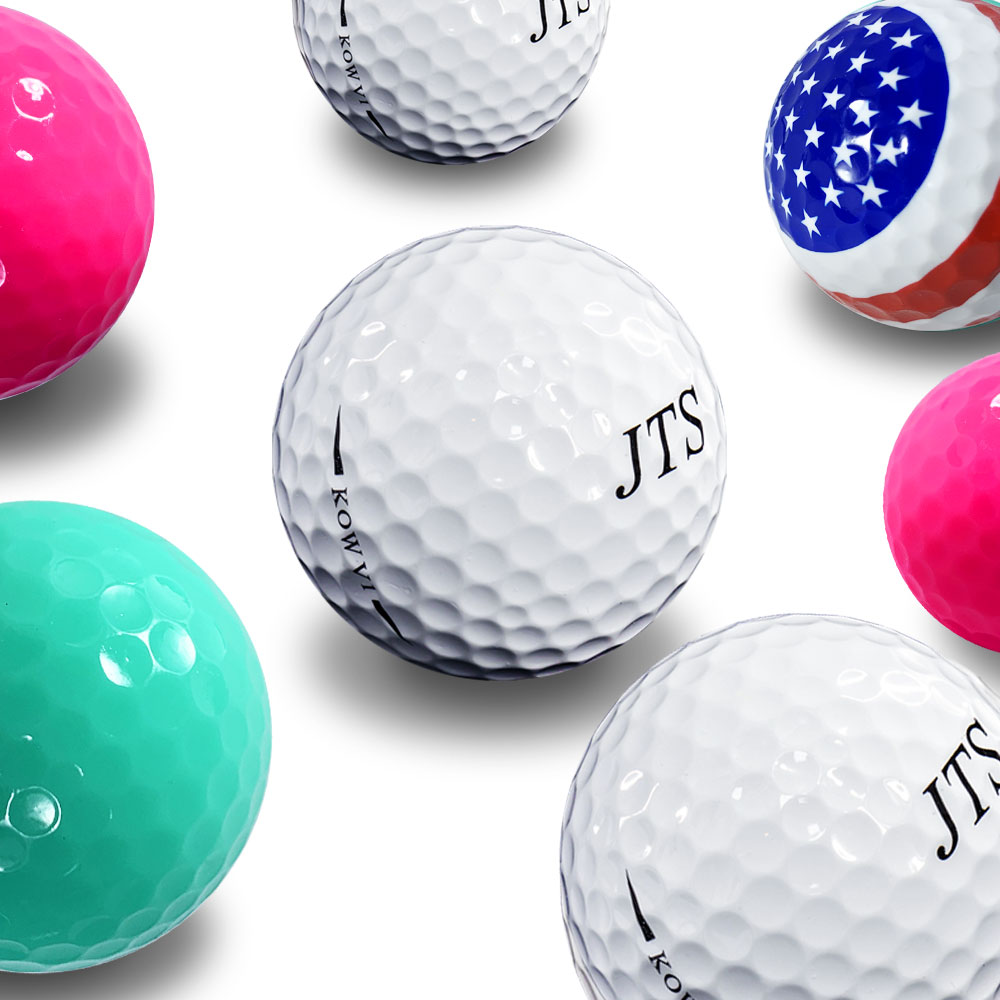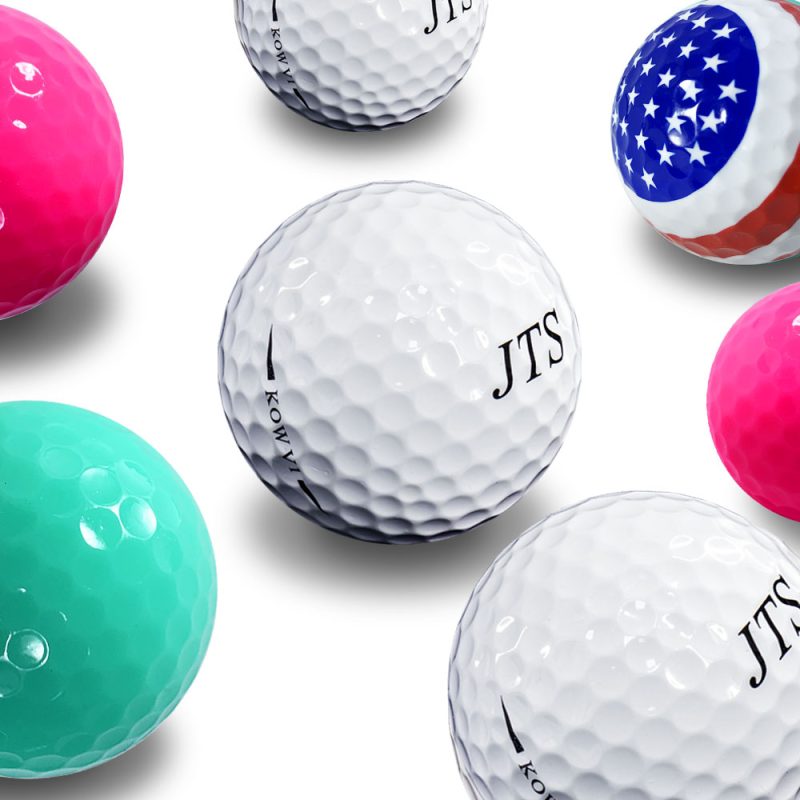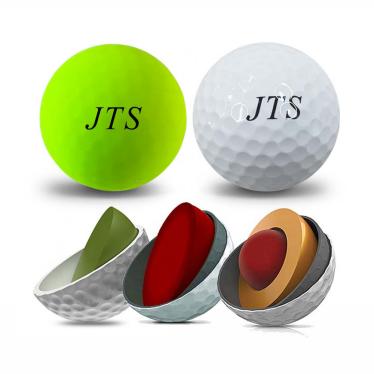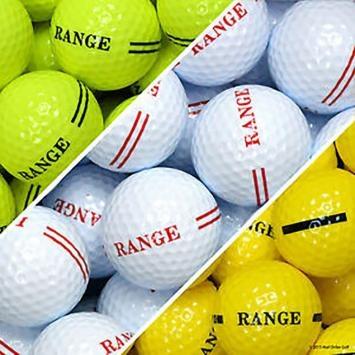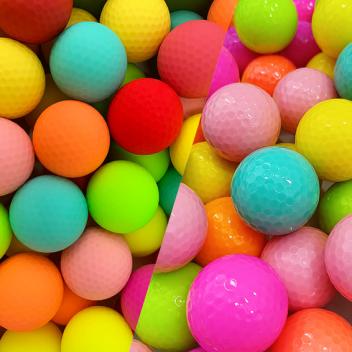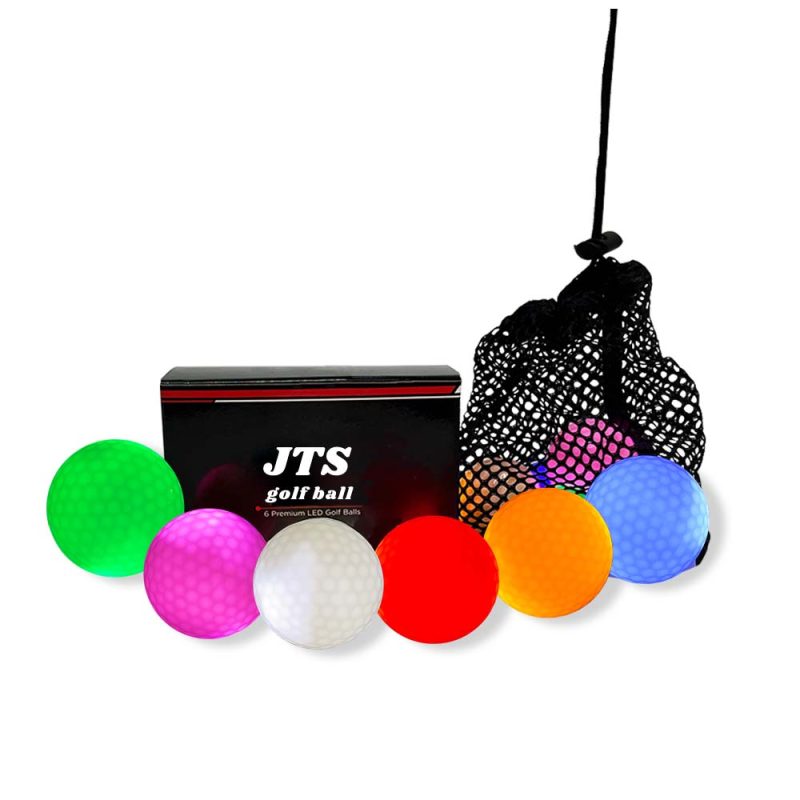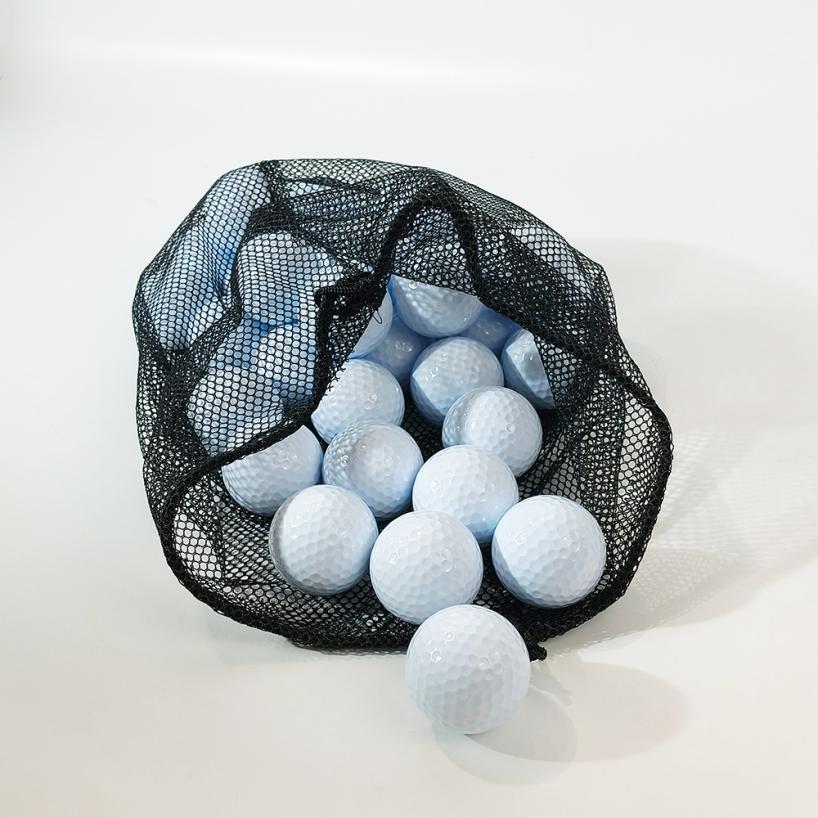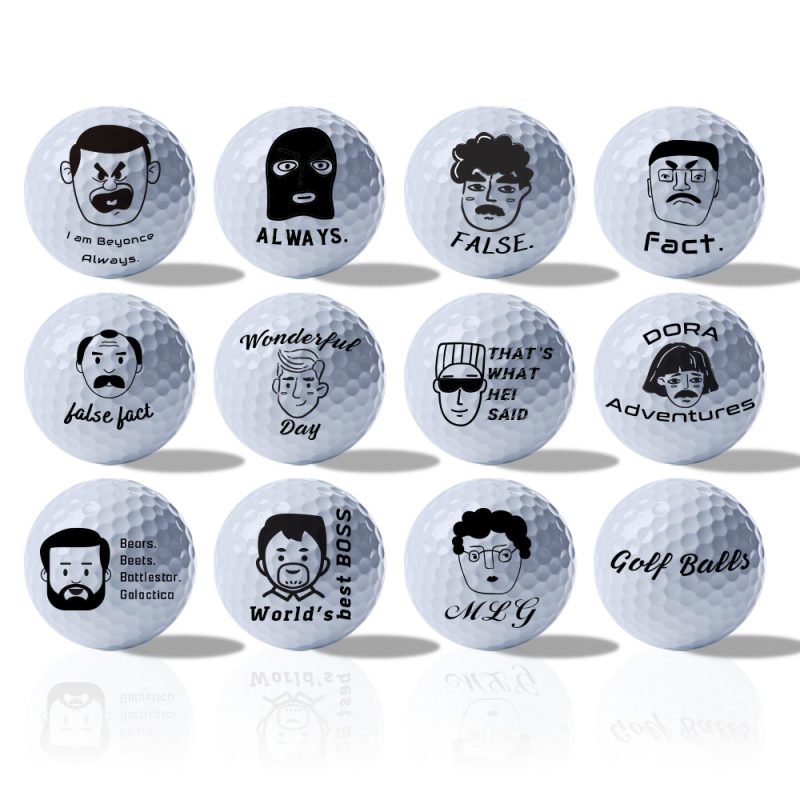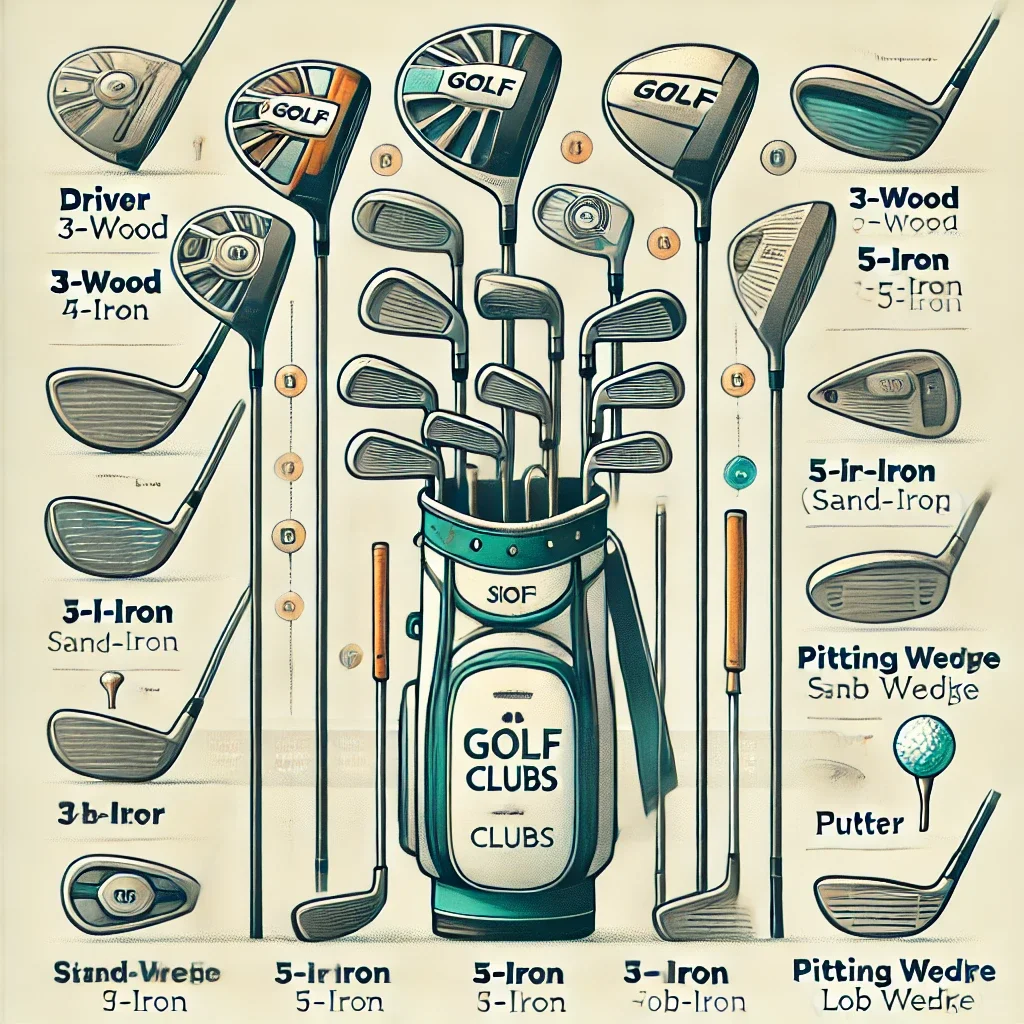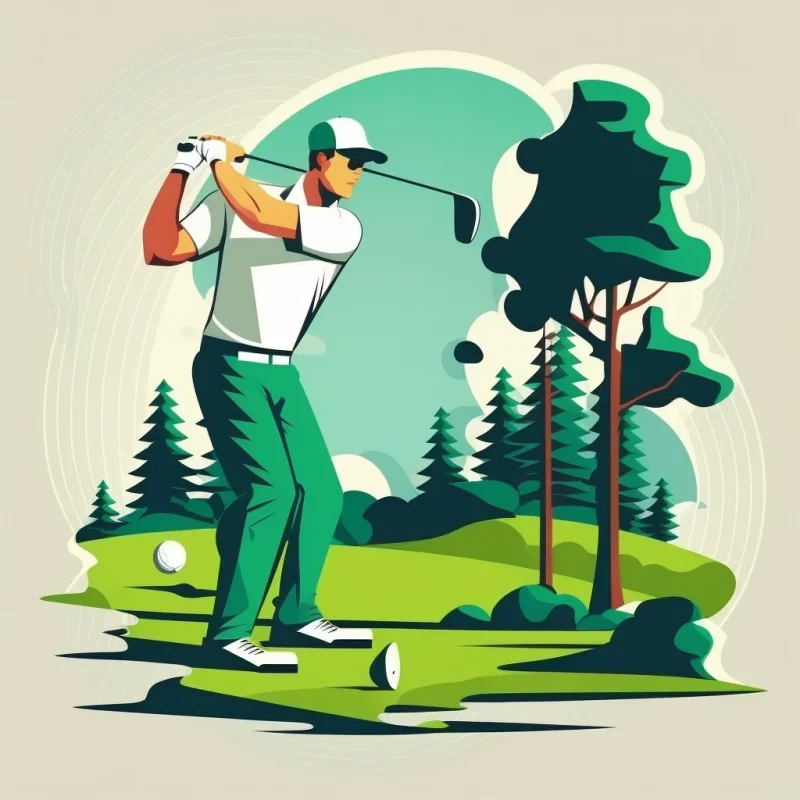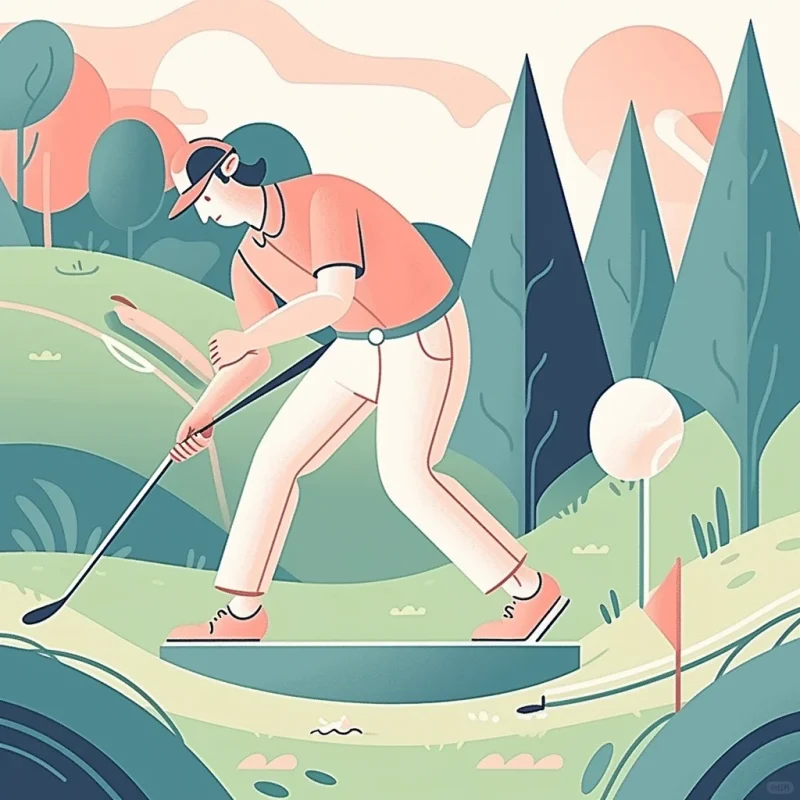Welcome to read this guide of how to find your ideal ball from JTS Sports.
we are professional golf ball manufacturer, and we also produce other golf products.such as golf tees, golf clubs headcover, golf club and so on.
Here we are going to introduce you our high quality golf balls and dive into how to choose golf ball.
Types of golf balls
Golf balls are available in various types, each designed for specific purposes and conditions.
We have all kinds of golf balls, such as tournament golf balls, range golf balls, color golf balls, led golf balls and other type golf ball.
Tournament golf ball
Tournament golf ball refers to a ball used in an official game of golf. These balls have specific design and performance characteristics to ensure fair and consistent play.
Tour balls are typically made of high-quality materials and have been carefully designed and tested to provide optimal flight range, spin rate and stability. These characteristics help players to better control the flight trajectory and landing point of the ball in the game, so as to achieve better results.
There are two material for our balls:urethane and surlyn.We have 2/3/4 layer urethane and surlyn balls.
Urethane ball is soft ball. It is high spin, soft feeling and good control.
Surlyn ball, its cover is durable and it’s capable of playing in a long distance.
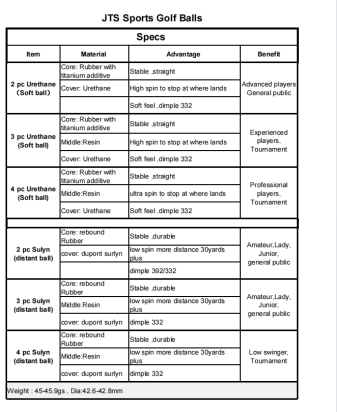
Range ball
In golf terms, Range golf ball usually refers to a ball used on a driving range or practice range. These balls are used in daily practice to help players improve their skills, including swing technique, accuracy and power control.
Compared to competitive golf balls, practice range balls may be more affordable and durable because they are subject to a lot of repeated hits. While they may not have as advanced physical properties as game balls (such as flight distance, spin rate, and stability), they are good enough for daily practice.
Usually we have white color and yellow color for you choose, you can also choose custom colors.Our range golf ball have high quality,it is very durable, close to 2 layer surlyn tour ball,it suite for beginner.
Color ball
While white is the traditional color for golf balls, colored balls are also available. These balls can be used for practice or casual play, as they are easily distinguishable from standard white balls.We can support custom color what you want.Just tell us what color you like,we will according to Pantone card to adjust your color.
LED golf ball
LED golf balls are golf balls that are equipped with LED lights, which allows them to emit light and create a unique visual effect. This feature makes LED golf balls particularly suitable for night practice or low-light conditions, as they can help players better track the ball’s trajectory and improve their skills.
We have different type for led ball.The constant light after hit,and we have six color for you choose.Flashing light after hit.Scan type,colorful light after every scan.Usually we can do 5-8minute,total 50h,we can also accept custom luminescence time.
Other type golf ball.
We also have other type ,such as plated golf bal、floating golf ball、park golf ball、sports golf ball
How to choose ideal golf ball?
Understand your purpose
Before you begin choosing your golf balls, it’s crucial to understand the use of golf balls, and your strengths, weaknesses, and playing style. Are you a power hitter who needs a ball that can stand up to high speeds? Or do you prefer precision and control, seeking a softer, more responsive ball? Understanding these factors will help you narrow down your choices.
Choose your core material
Golf balls typically come with either a solid or multi-layer core. Solid cores are generally more durable and offer a higher initial velocity, making them suitable for longer distances. Multi-layer cores, on the other hand, provide a softer feel and more spin control, often preferred by players seeking greater accuracy.
Consider your cover material
The cover material affects the feel, durability, and spin characteristics of the ball. Surlyn covers provide excellent durability and are suitable for beginners and players seeking a consistent feel. Urethane covers, on the other hand, offer softer feel and greater spin control, often preferred by more advanced players.
Personalize your appearance
Golf balls can be customized not only in terms of performance but also in appearance. You can choose from a variety of colors and even have your name or initials printed on the ball for added personalization. This not only makes your balls easier to identify but also adds a touch of uniqueness to your game.
Test and evaluate
Once you’ve narrowed down your choices, it’s essential to test and evaluate the balls to ensure they meet your needs. Hit a few shots with each type of ball to get a feel for their performance and how they react to your swing. Pay attention to factors like distance, trajectory, spin rate, and feel.
Make your Selection
Finally, based on your testing and evaluation, make your selection. Choose the golf balls that best suit your game and personal preferences. Remember, customization is about finding the perfect balance between performance and personal taste, so don’t be afraid to experiment and find what works best for you.
Brief summary
We hope this guide has been useful in selecting a right golf ball.Remember that the type of golf ball you choose should match your skill level, swing speed, and playing conditions. Different balls will perform differently, so it’s important to find the one that best suits your needs.

